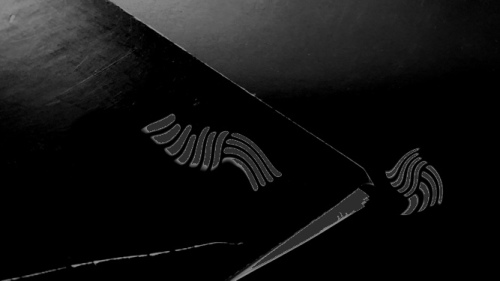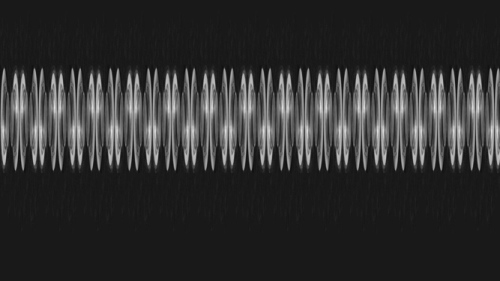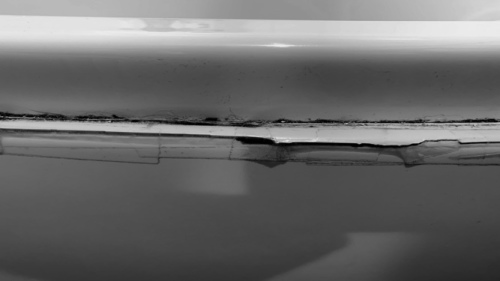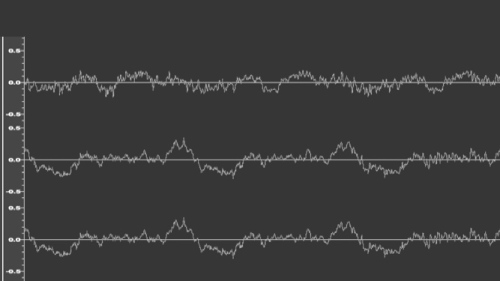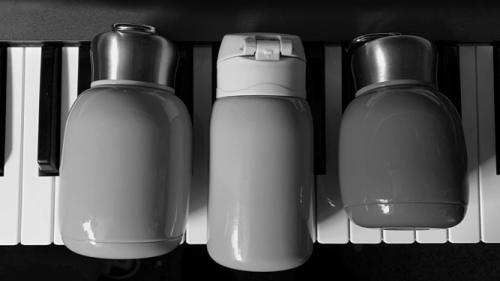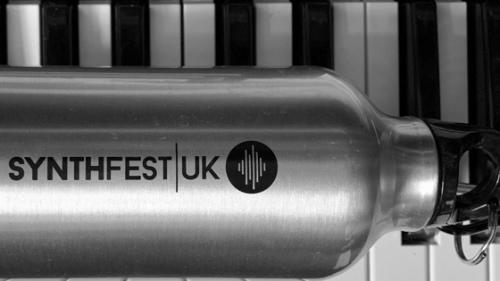
synthesizerwriter
I write, program, compose, invent, innovate, create and more. I'm really Martin Russ, but 'synthesizerwriter', my alter ego, has a music tech blog at: http://blog.synthesizerwriter.com You can message me here: https://bit.ly/3DGoeXj There's a video explaining my User Interfaces here: https://www.youtube.com/watch?v=CdttqB7Safs , and a blog post explaining them here: http://blog.synthesizerwriter.com/2021/10/my-pianobookcouk-virtual-instrument.html
synthesizerwriter's latest follows
synthesizerwriter's latest followers

Feature Synth
This is a rework of yet another abandoned project! I realised that I was trying to make synthesisers, when composers wanted sounds with specific features! So...

Dan Time 2
VERSION 2. An extended experiment in pitch and time manipulation of samples... Produced in a studio containing me, so it may also contain traces of my singing.
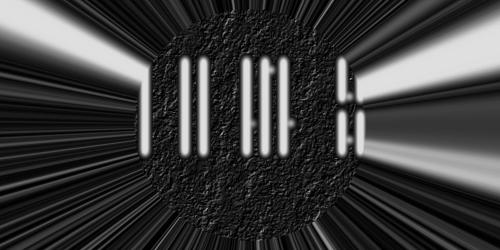
Deimos Strings
Strings from another planet. Nasty, rough, unclean, raw... You don't want these sounds. Definitely not the string sounds that you were looking for...

Fairy Piano Extras
This is me 'Remixing' my own virtual instrument. Three revisions or re-imaginings of the Fairy Piano. It is VERY pink!

Dan Time
Version 1.2. (Added Choir sound!) An updated experiment in chromatic time constancy of samples... Produced in a studio containing me, so it may also contain traces of my singing.

Fairy Choir
Designed to accompany my 'Fairy Piano', this is almost a 'Not A Choir', and it nearly got called that!

Demon Piano
Beyond 'Parallel Inversions' and 'Cyclic Transpositions 01'... Also way beyond the piano you might be expecting... This may not be the piano you are looking for...
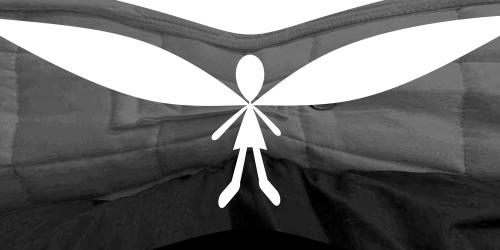
Fairy Piano
Not a real piano, and not played by real fairies. But I'm not the only one who likes how it sounds!

SWooh-arrMR3
Slow pads, dreamy evolutions and crazy-long release times - made for the June Discord LABS Afrorack Challenge Competition Contest... Updated to V1.3 after Alex's review...

SWooh-arrMR1
This is what you might get when the producer feeds the orchestra too much red caffeine drink...
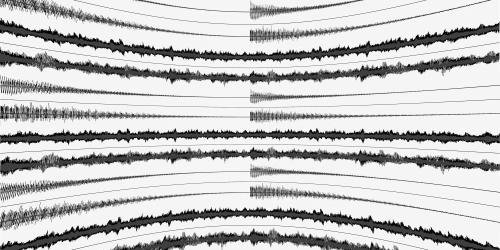
Sussed Perk Beta 01
Testing outside the boundaries... Basically I'm seeing if people want complex faders, or multiple envelopes...
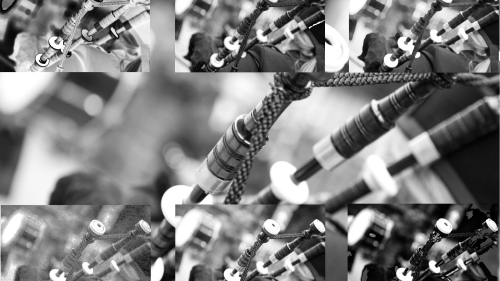
29 Bagpipes Synthesizerwriter
I missed the deadline for the ’29 Bagpipes’ competition, but here’s what I produced from those 51.1 seconds of audio: 4 pairs of looped stereo samples, one octave apart, from A#2 to A#5. Each pair contains a ‘harmonics’ part (‘harm’), which contains the harmonic content from the processed 51.1 seconds, plus an ‘inharmonic’ part (‘inharm’), […]...
Sample Packs
Collaborations
synthesizerwriter’s Reviews
Hello again, my old friend...
I was raised on the CS-80, playing them, tuning them, and lugging them up stairs to no-one's studio... I also know how to break them! At a time when synthesisers were rare and expensive, a shop in the backstreets of a rainy Manchester selling them was unusual, to say the least, and if you wanted variety, then the other shop (small, bijou, full!) was on the wrong side of King's Cross railway station in London, rather too close to a massage parlour. You had to be keen and rich in those days, long before GAS had become a recognised affliction. Acquiring Gear had yet to become a Syndrome, and I was paid to demonstrate synthesisers so that people would want them. Maybe 'want' is too weak a word...
So, this takes me back. To a black vinyl-covered, very heavy world with a chrome stand that no-one ever mentions, and a noisy chorus, oh and no MIDI! Then there's the poly after-touch, which confused people who had only just got used to channel after-touch (or maybe even velocity)!
But enough positioning. What does this sample pack sound like? Well, my acid test is the Funky 3 and 4 presets, because you just don't get presets like these on synths nowadays (except for homages, and the CS-80's dynamic HPF and LPF combination is still unusual and unfamiliar to many programmers... Just adding a fixed HPF is a poor substitute...) So, was I transported back more than 40 years? I have to admit that I was - it passes my 'Funky' test.
Tip number 1: add some chorus (you will definitely not miss the added noise from a real CS-80)
Tip number 2: the 'Detune' control is your friend (it detunes the two layers relative to each other) - there's a lot of very good reasons why the Detune and Ring Modulator are on the front left of the top panel, because they are the keys to making a CS-80 really shine in performance.
(There are quite a few Ring Modulator pedals intended for use with guitars (although these days that often means keyboards as well), and so you might like to try the combination. The 'you don't see controls like these any more' rotary sliders (I can't think of a better way of describing them) did require a careful touch to get the best out of their restricted range. I do wonder if more modern 'wheels' would have been a better option, but then they have a lot of momentum, so the light rotary sliders win for fast changes. Which is a round-about way of saying that you might need to do quite a bit of auditioning of Ring Modulator pedals before you get one that suits you. But then you get access to a whole world of interesting sounds... And now back to the main programme...)
You may also be intrigued that the 'Brass' presets aren't the sounds that you may be familiar with. Back in the late 70s, there were CS-80 players who specialised in Brass sounds (Matchstick Men...), and they didn't use the presets - they had the panels taped or glued. I'm not sure that you will find a Blade Runner preset either. But what you will find are the raw materials for making some very analogue, very bass-heavy, very fluidly live user detuning-control, very unusually filtered sounds.
What you won't get in any software capture of a CS-80 are the heat, the smoke (Oops!), the weight, that keyboard, the ribbon controller (Coolissimo!) the tuning over time, and the sheer presence. Actually, I'm wrong, I got quite a bit of presence from the DS-80, and it is a very welcome addition to my other CS-80s!
Overall then. A gorgeous addition to Pianobook.co.uk! An amazing project. A snapshot attempting the near-impossible, and providing some of the magic of a very very nice instrument. Warning - after playing with this you will want MORE!

Way, way more than I expected!
This one caught me out! I was expecting a bell sound, and indeed, there is one - nicely recorded, sounds very real, very bell-like, and it works across the keyboard range very well indeed!
So that's that, I thought, and was about to write the review... But then I spotted the 'Clockwork' rotary control, and...ah!...that's the preamble noise from the mechanical 'action' that strikes the bell. Oooh! You don't usually get that, and it is very useful for Foley work where you need to have the whole striking sequence for the bell. Nice attention to detail - I will add one extra point for that.
Next rotary control was 'Drone', and I was beginning to get the impression that this wasn't 'just another bell sample'. I was right - this gives a very rhythmical loop that isn't the boring, smooth perfection that you often get. Nope, this one is glitch-free and makes a point of having volume modulation, so it sounds like the sort of sound that you would get in French 'New Wave' films for a dream sequence. Go Francois Truffaut et al! If you combine the actual bell sound with the drone then you get a bell that morphs from a realistic bell to something much more strange and electronic as it pulses away continuously. I love it when sounds catch you out, and this is a perfect example!
The 'Drone Attack' rotary control adjust the time for the drone pulse to fade up, which means that you can adjust the twist from reality to unreality. Cool!
There lower set of rotary controls has the usual 'Tone' control for controlling the brightness of the sound, and on the far right, the room size for the Reverb, with the Reverb Wet Level above it. But loitering between these bracketing controls are three unexpected ones, and this is where it got really interesting!
Just to the right of 'Tone' is 'Clockwork Tune', and I almost missed this one because 'Tone' and 'Tune' look so similar. But it lets you tune the pitch of the mechanical 'Clockwork' sound, independently to the main 'Bell' sound. So at the root pitch it sounds like the mechanical sound that you would expect, but at higher pitches then it becomes a small chime sound - almost like being on the striker itself as it hits the bell. At lower pitches, then it starts out as additional thumpiness, but lower still and it becomes almost gong-like, turning the main Bell from a parochial pleasant sound into something dark and doom-laden. Full marks here for a very usable extra!
On the right, is a second pitch control - this time for the Drone. Now this enters 'sound design' territory, because you can now have the Drone end up lower or higher than the main Bell sound. So it starts out as a realistic bell, but then blends into something other-worldly and strange! Wonderful! I do love the unexpected!
Okay, that's me having completely run out of extra points to award! A first for me, and huge well-earned congratulations to Wiesental.
Overall, then, a very well thought-out sample pack that has uses far beyond the obvious. I do like it when a virtual instrument goes beyond the usual 'Sample it and turn it into a Decent Sampler virtual instrument' thinking, and this exploits a lot of what DS can do in very useful and unusual ways. I loved it!
(The demo by Wiesental starts out in conventional 'bell' sound space, as you would expect, but as it proceeds along the time axis, we enter a tesseract of increasingly unusual spaces. A very nice exploration of what you can do with a bell sound by going beyond the usual! I just wish that the 'big gong' sound was in there!)

Do not give Rob a tuning fork!
Rob has a mission: Music is Everywhere!
You probably dismissed it the first time you saw it, but he has now built up a sizeable collection of sampled instruments, and more than a few of them perfectly illustrate that music is all around us!
Rob's Beard Trimmer is a new example of this principle in action, and it takes it to new heights - there are six different sounds all derived from that not-quite-so-well-known source of musical performance: the beard trimmer.
You might have just giggled. if you did, then download this sample pack and listen, and then tell me if you are still amused...or if you have been inspired instead.
The range may be restricted to a span of 22 notes, but there are some amazing tones here. Rob freely admits that the UI has been 'borrowed' from the Global Swarm Decent Sampler virtual instrument, and it certainly re-uses the sample mixer section from that community project, but the 'Swarm' control has unfortunately been lost. I, for one, would genuinely welcome a swarming bread trimmer with open arms!
After selecting and panning one of the six very varied timbres, you can control the attack and release of the envelope (always a favourite feature for me!), and then set the reverb wet level. I struggled to prevent the sounds overloading the output of Decent Sampler - even with low levels of slider settings I was hitting the reds at the top of the volume display. Only with one or two pixels illuminated was I able to stop the overloading. I'm sure this is easily fixed, and a revision may well be in the pipeline by the time you read this.
The raw sample sound has been processed in a broad variety of ways - the sound has also been processed with a phase shifter, a number of rhythmic Lexicon effects, and a vocal tract sound that sounds like formants from resonant band-pass filters. Some of the samples are looped, but it is a pity that the 'Endless Loop' and 'Fram' samples are not looped, because it means that it isn't endless! I'm sure that this can be fixed, or you could edit the XML yourself. Here's what an example group looks like after I corrected the volume and added looping:
group name="ERL" loopEnabled="true" volume="30.0dB" tuning="0.0" tags="ERL" ampVelTrack="1"
sample path="Samples/RobsBeardTrimmerSynth-EndlessRoll_1.wav" tuning="0.00" rootNote="31" start="0" end="174848" loNote="16" hiNote="37" loVel="1" hiVel="127"
/group
(You will need to add in the chevrons that Pianobook.co.uk strips out of text! You also don't need the two 'volume=' parameter setting statements - just the one in the group is fine.)
I have to say that the looped effects samples are great fun!
In conclusion, this has to be a high contender for 'most fun from an 18 Megabyte download'. I eagerly await for the first demo produced using it!

Sheer loveliness!
Lovely! In two very different directions... (And it isn't very often that I say this!)
As often happens on Pianobook.co.uk, the name of the Sample Pack (or Virtual Instrument) is not always a good guide to the actual sound itself. This is a perfect example of that, and a perfect example of immense editing/processing skill in operation, which is immediately apparent when you audition the two sounds...
Evo1 is melancholic, wistful, regretfull and a whole host of other evocative words. I loved it, whilst at the same time hating its powerful influence on my emotions. This doesn't happen often, and rare magic like this needs to be encouraged and utilised!
Evo2 is a startling experience after Evo1. It is slow, nasty, unsettling: a tearing evolving morphing sound that evokes the name, but at the same time is way beyond a mere sample of a circular saw. Almost a diametric opposite of Evo1, it is spectacularly complex and involving. This time, I loathed and adored it in different ways for different reasons. There's a huge amount of compositional skill being revealed here, and just in a timbre!
The invitation to distort and saturate is interesting, because that's exactly what I do with my Spitfire BBCSO Discover sounds - but for them I have got very used to adding just a little bit of edginess - the review in my blog tells more... But Evo1 and 2 work nicely with rather more 'umph' than I generally use, and it became rather addictive. Welcome to the darker side!
I can't help my nit-picking mind, so here are a few fixes for the XML...
- The slashes are wrong in the background graphics path. Change them to:
bgImage="Samples/Wallpaper/circular_saw_DS.png"
and all will be well. (This may be OS-dependent)
- The mapping of the Mod Wheel to the 'Tone' cutoff-frequency for the Low-Pass Filter is broken - the line should look like this:
binding level="ui" type="control" position="2" parameter="value" translation="linear" translationOutputMin="0" translationOutputMax="1"
(With chevrons in appropriate places...)
Overall then, two very different experiences. Both good, but in different ways, and with very different use cases. I'm increasingly impressed with the musical wizardry exhibited by Marco in his Pianobook.co.uk contributions! (Sorry, I just couldn't resist that pun!) Recommended: totally, thoroughly and completely. Woooohooooo!

Quite quirky, decidedly dreamy, and completely cool!
When being a grumpy old synthesist was somewhere way off in the far distant future, I remember that memory was so tiny, and samples were so short, that round-robins were a crazy dream for all but the richest musicians. And here we are in that halcyon time, where a free 'found' percussion sample pack has up to four round-robins!
I'm intrigued that more people haven't used anagrams of Afrorack in their virtual instrument names, so 'Far Croak' is very welcome (I was expecting at least one modular synth-oriented submission: 'For a Rack'!). Even more so, because in a contest full of dystopian pads (a curious metaphor!), a 'found' drum set is like a breath of fresh... percussion!
18 sounds, some with 4 round-robins, some with 2 (or at least, that's what my ears tell me...), and lots of variations, laid out in a very neat grid (full marks for ingenuity, there!). That's what you get, and some of them are very nice. I loved one of the four Kicks at B0, although the C1 Kick may be more conventional. The C#1 rimshot is...unusual, but usable. Some of the D1 Snares are good, but the D#1 Snare is exceptional in every way - even ways in which you aren't expecting. But the real stand-out (runner-up) for me was the F1 Low Tom, which is complex and not at all what I expected, which is always a sign of a good drum set.
But full kudos goes to the amazing D2 High Tom, a pair of samples which go together perfectly as a 2 step 'clippity clop' sequence. A complete rhythm section in just two sounds, and if you add the 'Original' and "Reverse' options, then you are totally in 'You haven't heard this drum sound before' territory, especially if you close it with the C2 High Tom.
Fun, found!
Unusual, tick!
Novel? Definitely!
Stop reading! Download it now!
(I asked you to stop reading...)
(You still here?)








